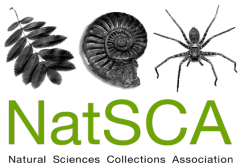Recording of Blaschka glass invertebrate models: A method and workflow for imaging using standardized methods
The glass models of marine invertebrates, made by Leopold and Rudolph Blaschka from 1863 to 1890, encompass more than 700 species and hold significant historic, scientific, and artistic value. Each model is unique, varying in size, colour, and complexity. Two models of the same species may show variation in design and even construction. This diversity of design spans nearly three decades of production, creating an issue with consistency when comparing models and sharing information about Blaschka collections. As important heritage objects, the models need to be researched, understood, maintained, conserved, and publicly exhibited. For this to occur, it is important to be able to compare and reference models, both within a specific collection and across collections worldwide. The most effective way to achieve this is through standardized imaging and digitization. Currently, there is no standard photographic method used to digitally reproduce and record the diversity of Blaschka models, and no resource-efficient approach proposed for imaging the damage and deterioration affecting the models. Here we present an efficient workflow for accurately recording all types of models, tested on the Blaschka collection housed at the National Museum Ireland – Natural History. We establish a standardized photographic method to digitally record the true size, colour, and design of each model and present easy and affordable techniques to record their material composition, existing damage, and structural integrity. The final images are accurate digital surrogates of the original objects, which can be associated with metadata, used, and shared. This workflow was designed to be scalable and applicable to any Blaschka collection, to ensure the digital preservation of each model. This can help researchers, conservators, and curators make better-informed identifications, comparisons, and decisions for safe storage, display, and conservation practice, while providing materials for museum education, outreach, and marketing.
